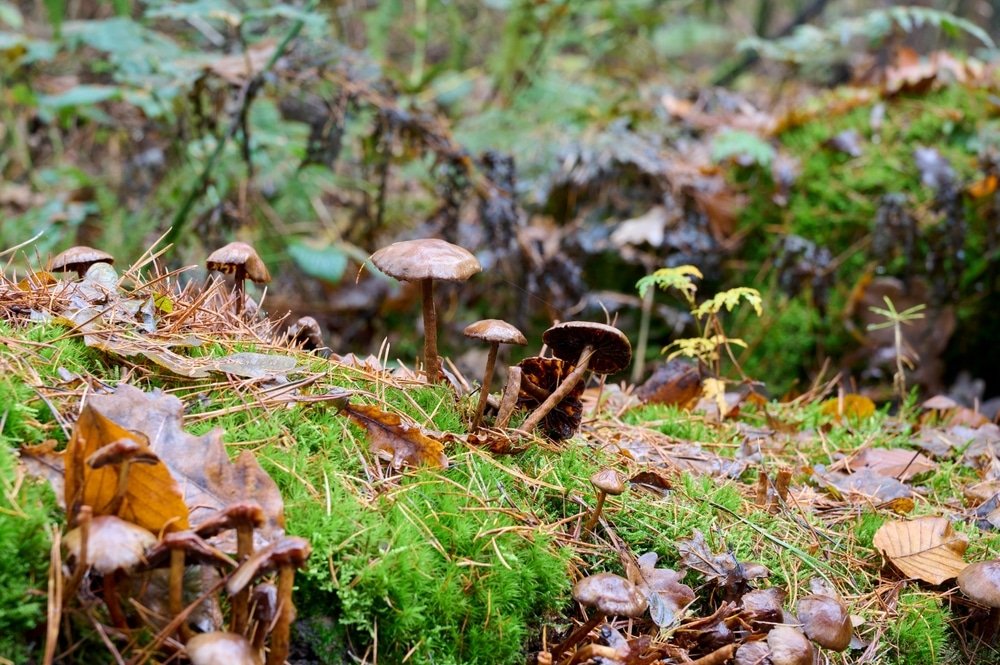A carbon removal company Funga introduces a nature-based solution that uses forest fungal microbiome, or fungi, to capture carbon, which attracted a $4 million seed funding round.
Funga claims to be the first CO2 removal company to be ‘powered by belowground fungal biodiversity restoration’. It develops a technology that applies fungal microbiomes to improve forestry growth and help mitigate the climate crisis.
The “Forest for the Fungi”
Funga’s founder, Dr. Colin Averill, spent almost 2 decades studying how soil microbial biodiversity impacts how forests act as carbon sinks. He is an ecologist and climate scientist interested in forest microbiome.
DNA sequencing and computational power enabled Averill to see “the forest for the fungi”, as he puts it. That outlook is based on the idea that reintroducing wild soil microbial biodiversity can speed up plant growth by about 64%. This, in turn, also boosts carbon capture.
In other words, he discovered the big role of fungi in accelerating tree growth and carbon capture ability of forests.
Dr. Averill said in an interview that:
“An entire galaxy exists below our feet, made up of millions of species of bacteria and fungi. These microscopic organisms have profound effects on forest growth and carbon capture that until now have been overlooked as a way to accelerate natural climate solutions while also restoring essential microbial biodiversity to our soils.”
The Texas-based carbon removal firm also said that the $4 million seed funding will allow them to bring out its tech from the lab and into the forests. Azolla Ventures led the funding round, with participation from Trailhead Capital, Better Ventures and Shared Future Fund.
Funga didn’t share what the valuation was for the round. But it said that it was an equity round, where notes were converted into equity.
The startup will use the funds for these purposes:
- Scale up development of Funga’s proprietary software and datasets
- Boost the footprint of its forest microbiome restoration projects
- Offer a new class of high-quality, sustainable carbon removal solutions
The funding will also be for de-risking and overcoming a few challenges that the company will be facing.
That includes how to win over the support and buy-in of forest landowners and the foresters. After all, scaling up and rewilding microbial communities is something that has never happened before.
Add to that the concern on how much land they can work on and how soon it will happen.
According to Averill, their team is a mix of the best scientists from NASA, US Forest Service, and cutting-edge fungal product firms as well as biological and environmental tech companies.
Restoring Forest Fungi to Capture CO2
Funga’s goal is to capture at least 3 billion tons of CO2 by 2050 with the help of forest fungi.
The firm will measure how much additional carbon is sequestered through forest microbiome restoration. Funga will then make the results available to corporate buyers under their carbon removal portfolio.
Each tonne of CO2 captured will generate a corresponding one unit of carbon removal credits. Companies looking to offset their own footprint can buy these carbon credits as part of the reduction goals.
Funga partners with Conservation Resources – an investment organization that invests in real asset properties – to establish its first forest restoration projects in Georgia.
In the next months, the fungi experts will develop another 2,500 acres of forest restoration projects within the loblolly pine areas of the southern U.S.
Funga said it aims to achieve these two milestones:
- Generate fungal DNA profiles from 1,000+ forests. The team will use this dataset to power their platform that suggests the right combinations of wild fungi for the right location in the forest for best carbon capture outcomes.
- Establish 1,000 hectares of projects where they plant trees and “plant” soil fungal communities.
Fungi and Biodiversity
Funga believes that these three things start to tip the earth into a 6th mass extinction event.
- Global land conversion,
- Pollution, and
- Environmental degradation
The extinction crisis does not only concern plants and animals; it is coming for the fungi and other microbial organisms, too. And for the company, this is truly alarming for the complexity of life on earth or what we call “biodiversity”. He added that the biodiversity of soil life is amazing.
Just a handful of soil contains 1,000+ coexisting microbial species. And this microbial biodiversity affects how ecosystems recycle materials, how plants access nutrients, and how captured carbon stays in soils. Yet, humans barely understand that.
These microorganisms, like fungi in the forests, can be a critical solution to help address climate change. As Averill said,
“We are eroding the biodiversity of soil and ecosystem microbial life, and we don’t know what we’re losing in the process. We’re almost certainly closing doors on ways to manage the Earth more sustainably.”


